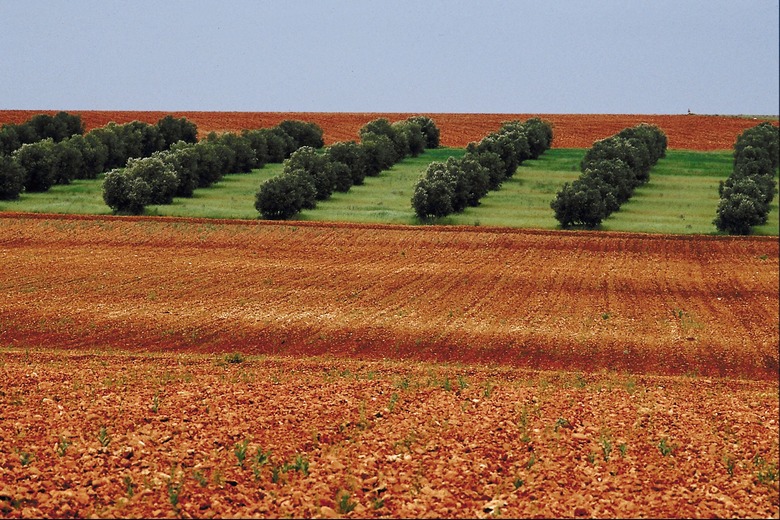Planting Zones In The Mideast
In August 2010, Aden Earth, in cooperation with The Plant Encyclopedia, announced a world hardiness zone map. This became the first means to correlate USDA hardiness zones in North America, and those for other areas of the world, including the Mideast. The ambitious efforts now make it possible to compare, contrast and understand the habitats of plantings native to the Mideast, and how best to care for, export, transplant and cultivate them successfully, worldwide.
Step 1
Zone 15 includes the countries of Israel, Jordan, Turkey, Syria, Iraq and Azerbaijan. Within the zone, temperatures do not fall below 16 degrees Fahrenheit. On the Aden Earth World Zone map, these countries are indicated with the colors yellow, brown and orange. Plantings native to Zone 15 in the Middle East include wheat, barley, chickpeas, lentils, apricots, almonds, figs and hazelnuts. The United States hardiness zone "equivalent" to Zone 15 is USDA Zone 8b.
Zone 17
Step 1
The southern region of Turkmenistan, the northwestern region of Afghanistan and the southern-most areas of Uzbekistan and western region of Tajikistan comprise zone 17. These regions are equivalent to the USDA hardiness zone of 9b. Within this zone, the minimum temperature does not fall below 25 degrees Fahrenheit. On the Aden Earth World Zone map, the color orange indicates these countries. This region is rich in vegetation, with over 1200 kinds of plants growing and harvested for their medicinal and food values. Licorice is the main crop and currency of Turkmenistan.
Step 2
- Zone 15 includes the countries of Israel, Jordan, Turkey, Syria, Iraq and Azerbaijan.
- On the Aden Earth World Zone map, these countries are indicated with the colors yellow, brown and orange.
Zone 18
Step 1
Southern Afghanistan and Pakistan comprise zone 18. Its "equivalent" in the United States is Zone 10a. Within zone 18, the minimum temperature does not fall below 36 degrees Fahrenheit. A brick-red color notes these countries on the zone map. Native plantings include trees such as the cedar, oak and poplar. The zone is also rich in trees that produce olives, almonds, hazelnuts and pistachios.
Zone 19
Step 1
Zone 19 in the Middle East is equivalent to USDA hardiness zone 10b. The zone includes the far western areas of Saudi Arabia, the southern coast of the country of Yemen, Jordan, Kuwait, Bahrain, Oman, Qatar and the United Arab Emirates (U.A.E.). Within zone 19, minimum temperatures do not fall below 39 degrees Fahrenheit. On the Aden map, a dark brown color marks these countries. Native plants include cacti, acacias and tamarind trees.
Step 2
- Southern Afghanistan and Pakistan comprise zone 18.
- Within zone 18, the minimum temperature does not fall below 36 degrees Fahrenheit.
Zone 20
Step 1
Mideast regions and countries in Zone 20 include the northeastern areas of Pakistan and the southeastern areas of Tajikistan. Zone 20 is equivalent to the USDA hardiness zone of 9b. Within this zone, the minimum temperature does not fall below 39 degrees Fahrenheit. The color black indicates these countries on the Aden map. This area is extremely diverse; plantings range from cotton to tobacco plantations, and juniper forests to sage bush deserts.
